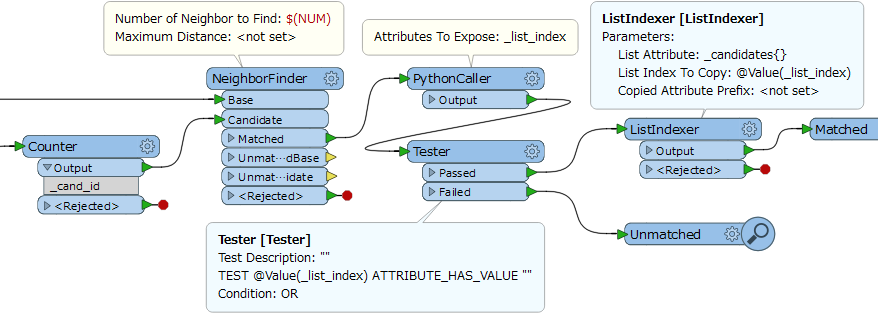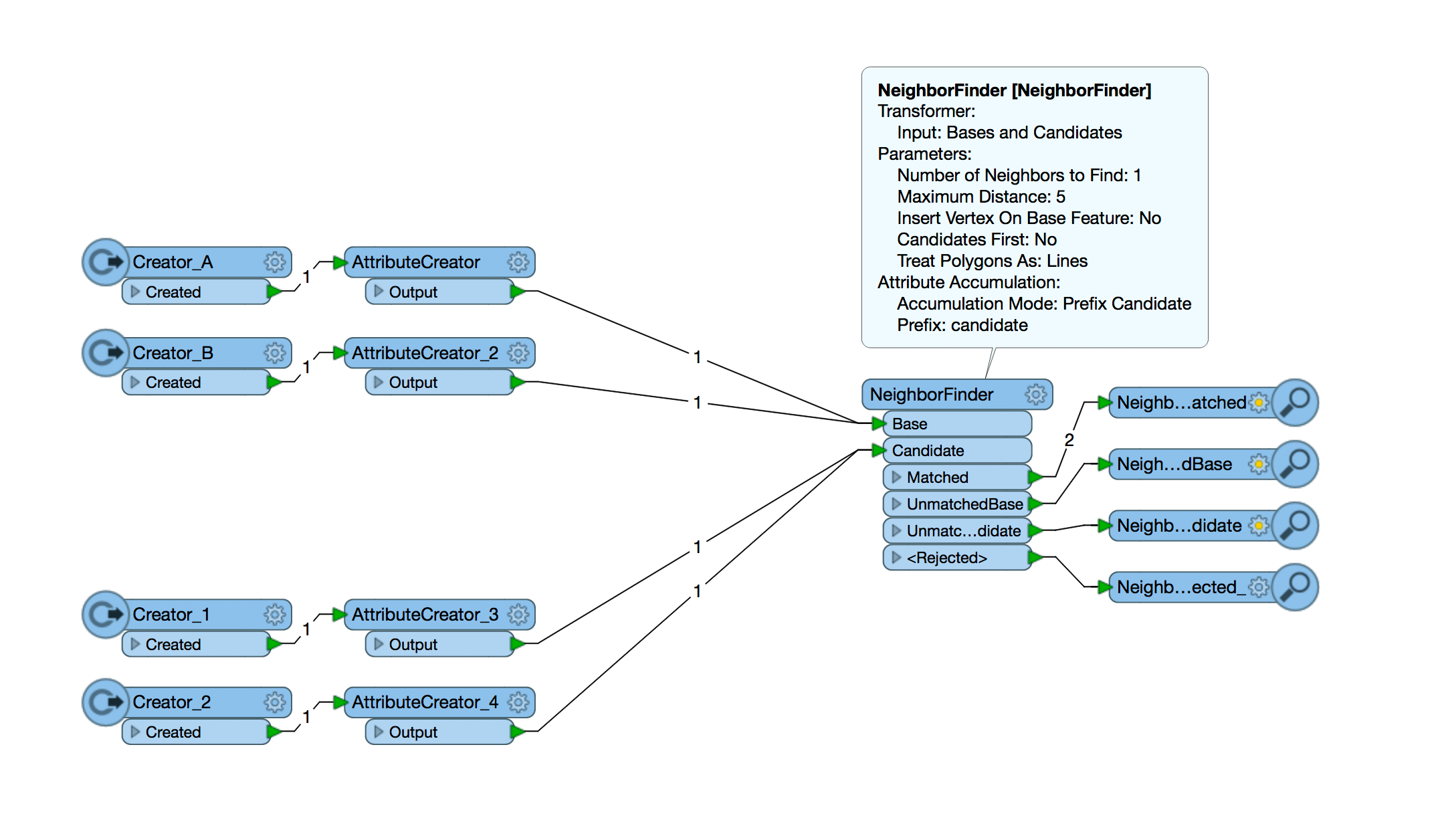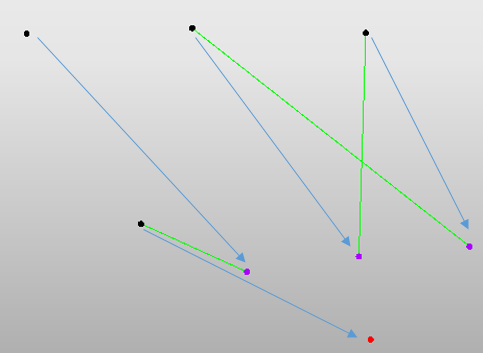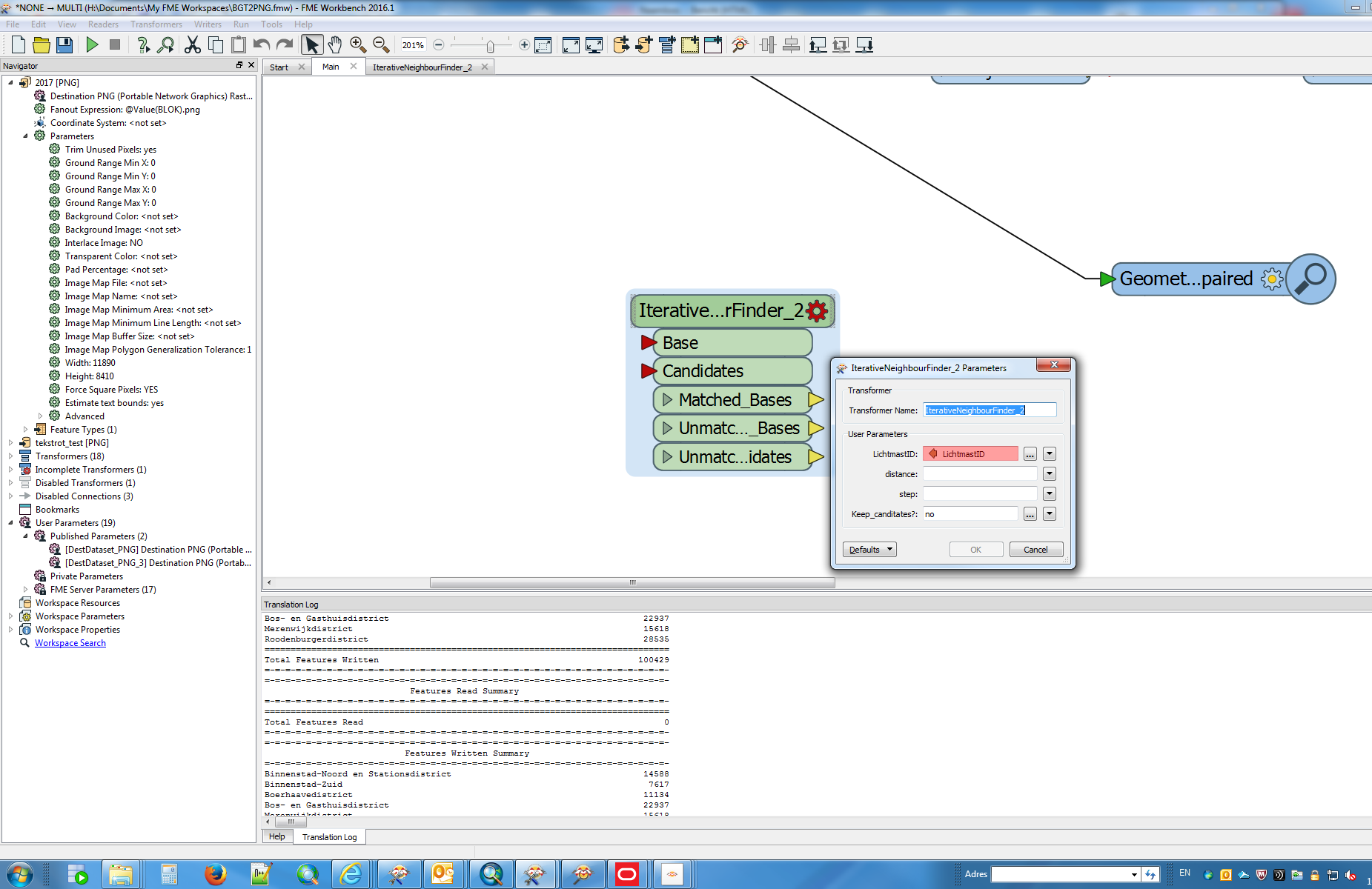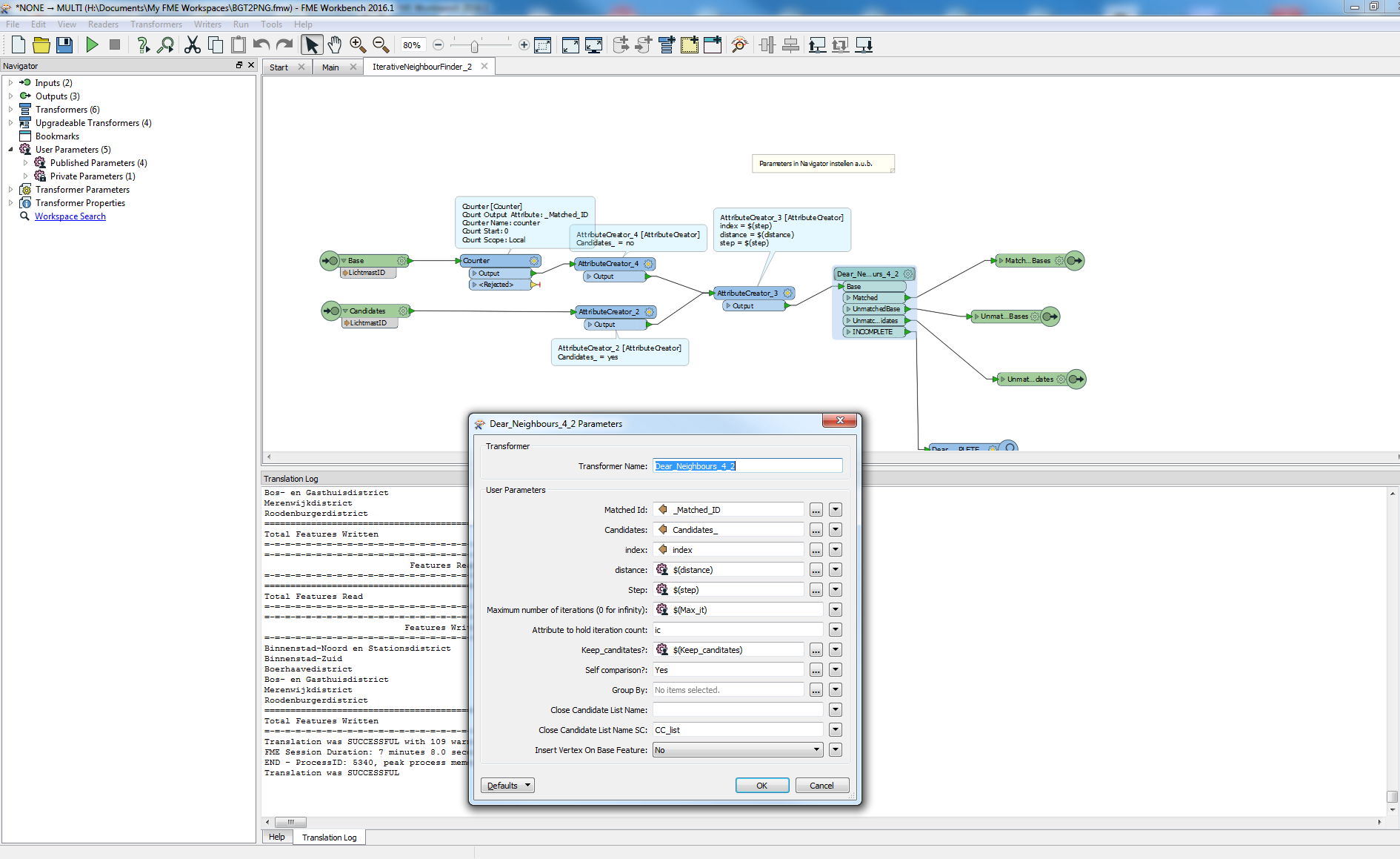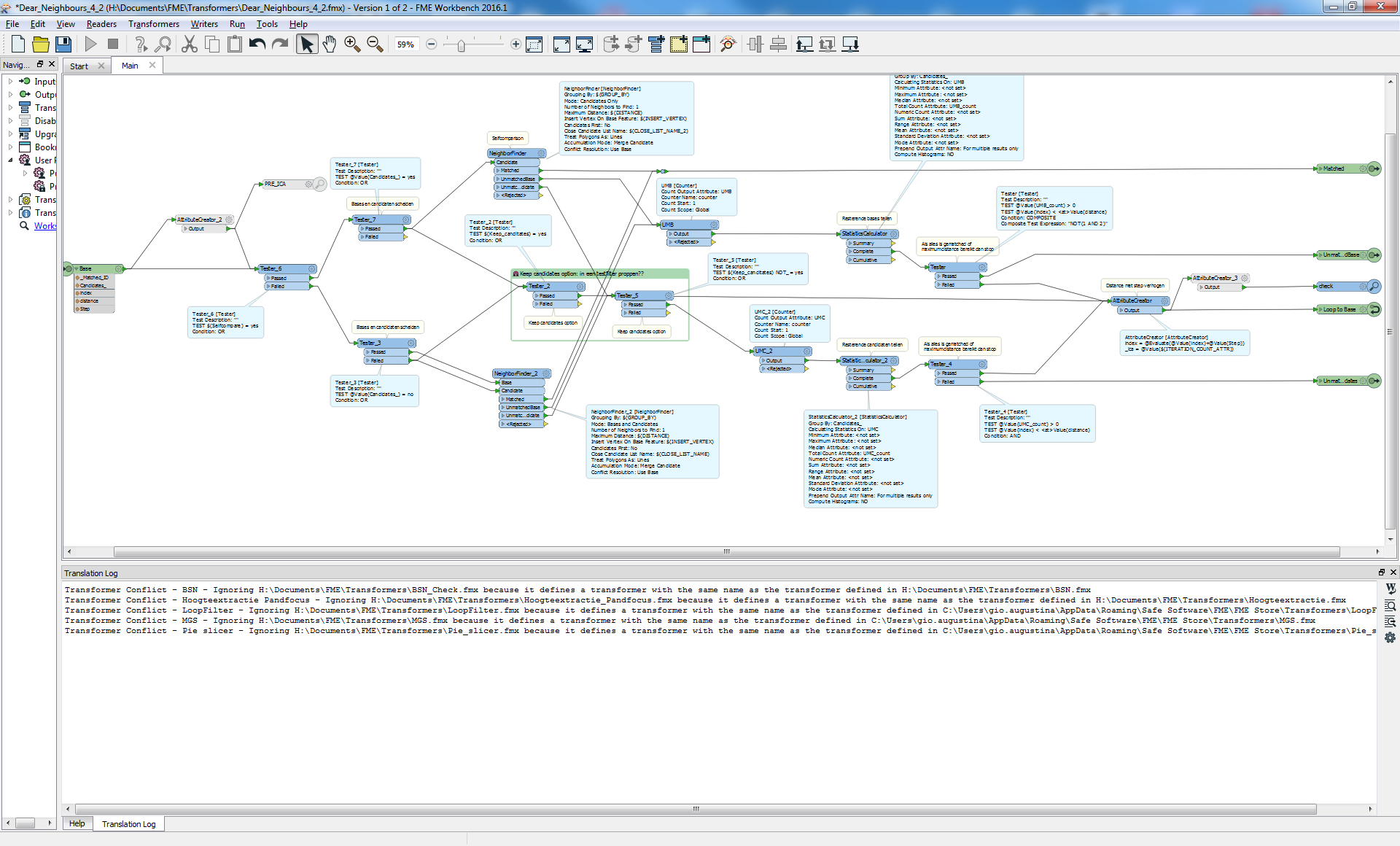Hi,
I'm trying to transfer attributes from an 'inaccurate' set of points to another 'accurate' one, however I'd like to limit canditates (or bases) to have a 1 to 1 relationship where if a candidate was already found as nearest neighbour to a base, then it is 'taken out of the pool' and not found again for another base.
In example below, I want to match A to 1 and B to 2, however 1 is closest to A and B thus gets assigned twice. If I change ports (Base<>Candidate) then I got opposite: 1 and 2 is assigned to B.
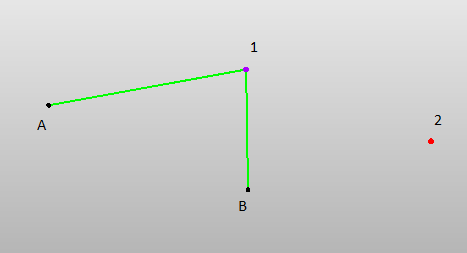
Is there a way of saying; if you already found A~1 then 1 is out of the pool and B~2 ?
Points have no common attributes to use for grouping by and there is 100's of thousands of those, hence finding nearest neighbour by location to assign correct attributes from incorrect geometry.


